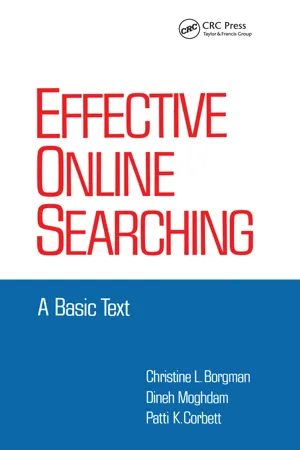Database Schemas
Database schemas are the structure or blueprint of a database, defining how data is organized and stored. They include tables, fields, relationships, and constraints. Schemas provide a framework for ensuring data integrity and consistency within a database system.
3 Key excerpts on "Database Schemas"
- eBook - ePub
Big Data Computing
A Guide for Business and Technology Managers
- Vivek Kale(Author)
- 2016(Publication Date)
- Chapman and Hall/CRC(Publisher)
...Other structures appear here also to accelerate performance, such as buffers for holding frequently used data and information for conducting rapid searches. The physical layer typically has parameters that can be tuned for optimal performance under the access patterns of a particular application. Therefore, the database designer may want to specify these parameters. However, the later models (i.e., relational, object-oriented, and deductive) typically leave the tuning task to the DBMS. If the database designer does have access to these structures, he specifies appropriate values in a physical schema. The physical schema is a second machine-readable script, which addresses such issues as what data elements to store in close physical proximity (on the same disk track or cylinder, for example), how to distribute the data across multiple files and storage devices, and which files to index. Table 2.2 shows the levels of data abstraction. 2.3.4 The Three-Schema Architecture The three-level ANSI architecture has an important place in database technology development because it clearly separates the users’ external level, the database’s conceptual level, and the internal storage level for designing a database. In most DBMSs that support user views, external schemas are specified in the same data model that describes the -conceptual-level information; for example, a relational DBMS like Oracle or SQLServer uses SQL for fulfilling this requirement. The goal of the three-schema architecture, is to separate the user applications from the physical database. Schemas can be defined at the following three levels: 1. The external or view level includes a number of external schemas or user views. Each external schema describes the part of the database that a particular user group is interested in and hides the rest of the database from that user group...
- eBook - ePub
Information Systems
What Every Business Student Needs to Know, Second Edition
- Efrem G. Mallach(Author)
- 2020(Publication Date)
- CRC Press(Publisher)
...5 Data, Databases, and Database Management Chapter Outline 5.1 The Database Concept 5.2 Operational Databases 5.3 Databases for Decision Making 5.4 Database Management Software 5.5 Database Security Why This Chapter Matters Computers do not make businesses successful. Intelligent use of information helps make businesses successful. Computers are a tool in using information intelligently. Databases are a key technology in making today’s intelligent uses of information practical. To get the information we need when we need it, that information must be properly organized. Proper organization makes it possible to retrieve information efficiently, without a lot of extra work; to control access to information, making it available to those who need it but not to those who shouldn’t have it; and to use this information in new, creative ways. As a businessperson you must be on the lookout for new ways to use information. Knowing how computers organize information will help you do this. Knowing this will also help you work with professional database designers to get the databases you need to do your work. Chapter Take-Aways As you read this chapter, focus on these key concepts to use on the job: 1 Databases help organizations become effective by allowing people and applications to share common organizational information. 2 Most databases today use the relational model. Relational databases are flexible. They can handle applications that were not foreseen when the database was first set up. 3 Applications that involve data analysis and decision making may use other database models. 4 Using databases requires database management software to store and retrieve data on behalf of users and applications. 5.1 The Database Concept A database is an organized collection of data about related real-world items or concepts. At the lowest level data consists of bytes, because bytes are the basic storage unit of computers...
- eBook - ePub
Effective Online Searching
A Basic Text
- Christine L. Borgman, Dineh Moghdam, Patti K. Corbett(Authors)
- 2021(Publication Date)
- CRC Press(Publisher)
...6 Databases A thorough knowledge of the structure and content of a database is basic to the training of a search analyst. Yet, it would be impossible to do justice to the topic as a whole without placing stringent limits on the scope of the discussion. Thus, the following points are covered only to the extent that they affect the ability of the search intermediary to conduct an online bibliographic search: the origin of databases and the structure of the industry; types of databases and their relationship with printed indexes; selecting the appropriate databases; the internal makeup and structure of a typical database, including elements of standardization; the relationship between databases and information retrieval systems; and finally, where to turn for more information on a given database. As mentioned in Chapter 1, a database refers to any organized collection of related computer-readable data. In this particular case, emphasis is entirely upon those databases which are searchable through the large, multi-database, commercial information retrieval systems. However, one should not lose sight of the fact that information contained in many such databases has previously been available in a printed format, namely the index. A collection of databases, such as those offered by a search system vendor, is sometimes referred to as a "databank." In a library context, most electronic databases are based on an equivalent printed index but offer greater flexibility and sophistication in the searching process. Computer capabilities can be utilized to take advantage of multiple access points to each entry, and logical relationships can be required among entries to refine a query further. ORIGIN OF DATABASES Although the capability of producing electronic databases coincided with the production of the first computer, the practicality of the venture depended upon the ability to search large volumes of data at a low cost per search...


